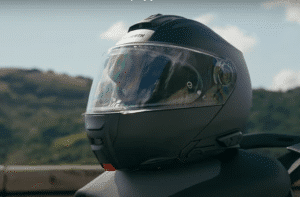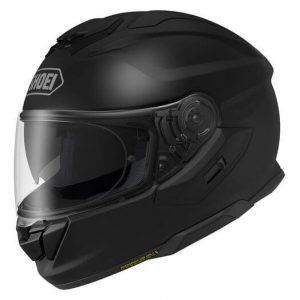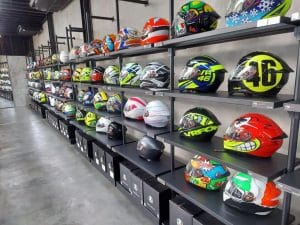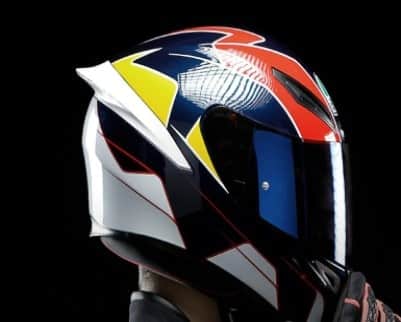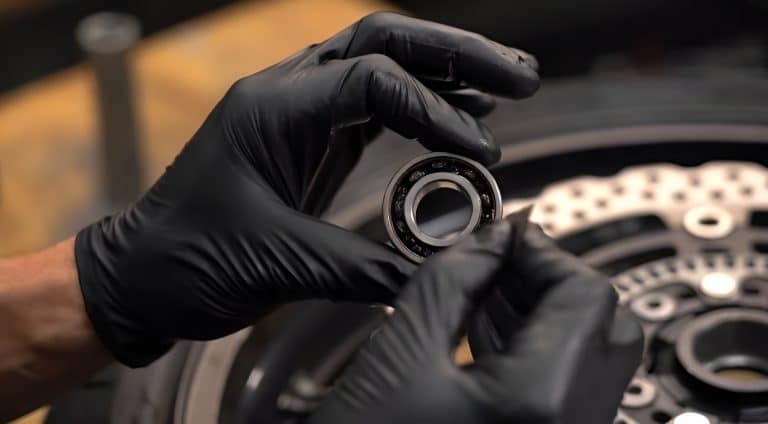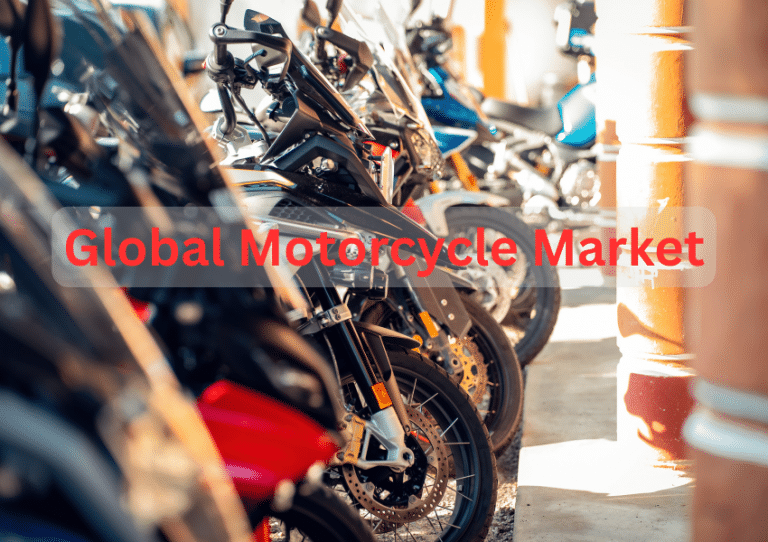Motorcycle helmets are important safety equipment for riders, which means we want to replace them should we crash them. However, what about minor accidents? Can we just fix the helmet and continue using it? Can a motorcycle helmet be repaired?
Generally, you can repair a motorcycle helmet that has suffered only cosmetic damage. Anything beyond that may be a waste of time since the helmet may no longer be able to protect well. Getting a new helmet would be safer.
In this article, let’s discuss the question – can a motorcycle helmet be repaired? I’ll also touch on some of the helmet parts you can repair and whether a repaired helmet is safe and legal to use.

Can A Motorcycle Helmet Be Repaired?
Want a quick answer? Here it is: it depends.
To start with, do not try to repair a crashed helmet.
A motorcycle helmet protects you by first dispersing and then absorbing the impact of a motorcycle crash. The outer shell does the dispersing work, spreading the impact over as wide an area as possible.
The EPS (Expanded Polystyrene) layer under the outer shell then absorbs the impact, reducing as much as possible the force delivered to your head.
During this process, the outer shell usually shatters or cracks, while the EPS layer collapses into itself and becomes deformed. In short, the helmet can no longer protect you.
If you intend to repair these damages, it may take too much work. Not all outer helmet shells are made of repairable materials, and you may also find it very hard to find replacement EPS liners for your helmets.
However, if your helmet only requires cosmetic repairs, then go ahead and do it.
When we talk about ‘cosmetic damage’, were are talking about damages to the aesthetics of the helmet. These could be:
- Scratched helmet outer shell or visor,
- Broken peak cap,
- Worn-out rubber linings or
- Flattened paddings or liners.
These repairs are sensible, as the helmet’s fundamental ability to protect you against crashes remains intact. The EPS layer and the outer shell are not subjected to a great force.
In fact, by replacing the paddings, liners, or visors, you are giving your helmet a new lease of life. These new parts would have made you feel like the helmet was fresh from the store when you first picked it up.
How Do People Repair Motorcycle Helmets?
Now that we know you should be able to get away with repairing motorcycle helmets with cosmetic damages, let’s look at how people repair helmets.
Outer Shell
Outer shells are probably the most repaired parts of a helmet because they are the most likely to be cosmetically damaged. Common damages to the outer shell usually come from:
- Drops,
- scratches,
- Loss of clear coat or
- Discoloration, usually from sun and weather exposure.
Repairs may depend on the outer shell’s material. For fiberglass shells, you can chamfer away scratches or drop marks and then lay new layers of fiber and glass. For plastics, the scratched part may be smoothed with sandpaper, with fillers optional.
After the surface is prepared, helmets can be repainted to restore their original finish. This is also common with helmets that have discoloration issues.
Helmets may also be repaired and restored, meaning that after repainting, new decals and designs may be added.
Inner Paddings or Liners
Inner paddings and liners usually deteriorate after some time. The foams usually become decompressed and are no longer able to give you a snug fit. They also get dirty and smelly, and discoloration is also quite normal.
These are generally not repaired but replaced.
Most major helmet makers offer paddings and liners as spare parts – you can buy them and replace these paddings yourself.
Other Parts
There are also other parts of a motorcycle helmet that can be repaired or replaced:
Rubber Lining: Rubber lining may deteriorate over time, as they are exposed to the environment. They usually become sticky or dry over time. You can purchase the rubber lining, and then replace them.
Peak Cap: Peak caps protrude out from adventure helmets, meaning they may get scratched or broken.
Common repairs include sanding away the scratches before repainting. A broken peak cap can be welded back and smoothed with fillers and sandpaper before repainting. Replacement parts are also available.
Visor: Visors pick up scratches over time, which may cause visibility problems. Visors are commonly seen as consumables, so riders simply buy new visors to replace the old ones.
Base Plate: Base plate helps to connect the visor and the helmet itself, and allow the visors to be opened up and closed down. The springs inside the base plate may lose their ability over time and require replacement.

Is A Repaired Helmet Safe To Use?
If the helmet repair is mostly cosmetic, and the helmet itself has never been in a crash, it should be safe to wear and use.
This is because the main parts of the helmet that protect your head have not been damaged. I’m talking mainly about the outer shell and the EPS liner underneath it.
However, suppose you actually repair a crashed helmet. Now, the helmet may look pristine and new, but you cannot be sure if the repaired outer shell is able to do a good job of dispersing impact.
You also cannot confirm if the inner EPS layer has become compressed. If yes, the helmet is no longer usable, as it cannot absorb impacts well anymore.
On top of that, even if you managed to replace the EPS layer, you cannot be sure of the quality of the repair work and if the EPS and helmet overall are still able to perform to DOT, ECE, or Snell safety standards.
Even if you are keen to have your repaired helmets tested for safety, it may be a difficult, expensive thing to do. DOT for example, does not even have third-party testers to verify a helmet’s safety.
You will have to send your helmets to be tested by Snell or for ECE standards, which would take quite a bit of time and money.
Instead of doing all that, why not just get a new helmet? Here are some of the best AGV helmets for you to start with.
Is It Worth It To Repair Motorcycle Helmets?
If you Google or go to YouTube, you may see many businesses offering helmet repair services. Judging from the responses, you would think many people are looking to repair their helmets.
However, is it worth it?
From my experience in the motorcycle industry for over 30+ years, I think helmet repairs are only worth it when…
You Have An Expensive Helmet
Suppose you own a premium helmet, say a AGV Pista GP RR, or an Arai XD5. If your helmet picks up a deep scratch, say from a drop or so, then it may be worth it to try to repair the damage.

If your helmet has discolored or picked up dings over long use, it may make sense to resurface, respray, and reapply decals on the helmet, too.
When you have invested so much in your helmet, you want to keep it in its most pristine condition for as long as possible.
You Have A Memento Helmet
Memento helmets are what I call special helmets. They may not be expensive, but they remind you of special moments in your life – say you wear this helmet to go back and forth from university to finish law school.
In this case, it may make sense to repair and restore the helmet and turn it into something you wear occasionally, provided they are still functional. You may also turn it into a display item.
Your Helmet Is A Collector’s Item
Some old, classic helmets are collector’s items, with folks willing to pay even up to the tens of thousands for one. Limited edition helmets can fetch similar prices, too.
With these helmets, it may make sense to repair and restore them. However, in some cases, restoring these helmets may not be a good idea, as some buyers prefer the helmet in its original deteriorated state.
Think properly when you make your decision here. If you are going to repair and restore these helmets, make sure you do it with a professional.

Can A Motorcycle Helmet Be Repaired? Proceed With Caution
In this article, we discussed the question – can a motorcycle helmet be repaired? The conclusion would be to only do the repair work when the damage is cosmetic, and when the helmet has never been in a crash.
Helmets who have been in crashes should be assumed to be functionally no longer able to protect you. I don’t recommend restoring these helmets.
If you are to proceed to repair them, they are best kept as a display item, and should not be worn on the road ever again.
If you are reading about this article, chances are you are keen to learn about helmet safety. Here are a couple of articles you may be keen to check out:
- Top 3 Safest Motorcycle Helmet Brands
- Are AGV Helmets Snell Approved?
- What Happened To Niki Lauda’s AGV X1 Crashed Helmet?
Michael’s Summary and Conclusion
Information for this article was partially sourced and researched from the following authoritative government, educational, corporate, and non-profit organizations:
NO/NO



